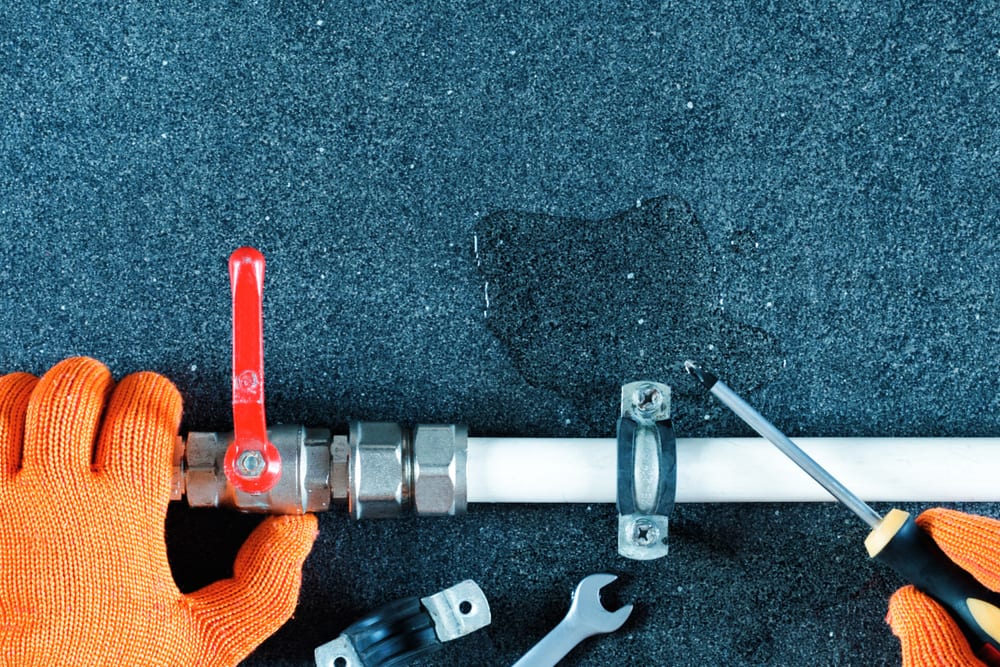How to Inspect If Your House Has a Covert Leakage
Schedule A Service CallThey are making a number of great points on the subject of Detecting hidden plumbing leaks as a whole in this content following next.

Early discovery of dripping water lines can mitigate a potential disaster. Apart from saving you cash, it will reduce the worry as well as aggravation. The minute you locate a leakage, calling your plumber for repair work is the most effective service. Nevertheless, some small water leakages might not show up. If you can not identify it with your nude eyes, below are some hacks that assist.
1. Analyze the Water Meter
Every home has a water meter. Checking it is a proven way that assists you discover leakages. For beginners, shut off all the water sources. Guarantee nobody will certainly purge, use the tap, shower, run the washing machine or dishwasher. From there, go to the meter and also watch if it will certainly transform. Given that nobody is using it, there should be no movements. If it relocates, that shows a fast-moving leakage. Likewise, if you identify no changes, wait an hour or 2 as well as check back once more. This indicates you might have a slow leak that could also be below ground.
2. Check Water Intake
Analyze your water bills as well as track your water consumption. As the one paying it, you need to see if there are any discrepancies. If you find sudden changes, regardless of your intake being the same, it suggests that you have leaks in your plumbing system. Bear in mind, your water expense must fall under the same array every month. An abrupt spike in your bill suggests a fast-moving leak.
At the same time, a steady rise monthly, despite having the exact same routines, reveals you have a slow leakage that's also gradually escalating. Call a plumber to extensively examine your residential or commercial property, particularly if you feel a warm area on your floor with piping underneath.
3. Do a Food Coloring Test
When it involves water consumption, 30% originates from bathrooms. Examination to see if they are running correctly. Decline specks of food color in the tank and also wait 10 minutes. If the shade somehow infiltrates your dish throughout that time without flushing, there's a leakage between the storage tank and also dish.
4. Asses Outside Lines
Do not forget to examine your outside water lines as well. Test spigots by attaching a yard hose. Ought to water seep out of the link, you have a loose rubber gasket. Change this as well as make certain all connections are limited. If you have actually got a lawn sprinkler, it will certainly aid get it properly took a look at and also maintained every year. One tiny leak can waste tons of water and spike your water bill.
5. Analyze the situation and check
House owners must make it a routine to check under the sink counters and also inside closets for any kind of bad odor or mold and mildew development. These 2 warnings indicate a leak so prompt focus is needed. Doing routine evaluations, also bi-annually, can save you from a major problem.
More significantly, if you understand your house is currently old, keep a watchful eye on your heaters, hose pipes, pipes etc. Look for discolorations and also compromising as most appliances and pipelines have a life span. They will certainly also normally wear away due to deterioration. Do not wait for it to rise if you believe dripping water lines in your plumbing system. Call an expert plumber right away so you do not end up with a horrible mess in your home.
Early detection of dripping water lines can reduce a potential calamity. Some small water leaks might not be visible. Checking it is a surefire way that aids you find leaks. One little leak can lose bunches of water as well as increase your water expense.
If you suspect dripping water lines in your plumbing system, do not wait for it to rise.
WARNING SIGNS OF WATER LEAKAGE BEHIND THE WALL
PERSISTENT MUSTY ODORS
As water slowly drips from a leaky pipe inside the wall, flooring and sheetrock stay damp and develop an odor similar to wet cardboard. It generates a musty smell that can help you find hidden leaks.
MOLD IN UNUSUAL AREAS
Mold usually grows in wet areas like kitchens, baths and laundry rooms. If you spot the stuff on walls or baseboards in other rooms of the house, it’s a good indicator of undetected water leaks.
STAINS THAT GROW
When mold thrives around a leaky pipe, it sometimes takes hold on the inside surface of the affected wall. A growing stain on otherwise clean sheetrock is often your sign of a hidden plumbing problem.
PEELING OR BUBBLING WALLPAPER / PAINT
This clue is easy to miss in rooms that don’t get much use. When you see wallpaper separating along seams or paint bubbling or flaking off the wall, blame sheetrock that stays wet because of an undetected leak.
BUCKLED CEILINGS AND STAINED FLOORS
If ceilings or floors in bathrooms, kitchens or laundry areas develop structural problems, don’t rule out constant damp inside the walls. Wet sheetrock can affect adjacent framing, flooring and ceilings.
https://www.servicemasterbyzaba.com/blog/how-to-detect-water-leakage-in-walls/

I came across that post about Leaking water lines while doing a lookup on the internet. Are you aware of another individual who is fascinated by the subject? Why not promote it. I appreciate reading our article about Detecting hidden plumbing leaks.